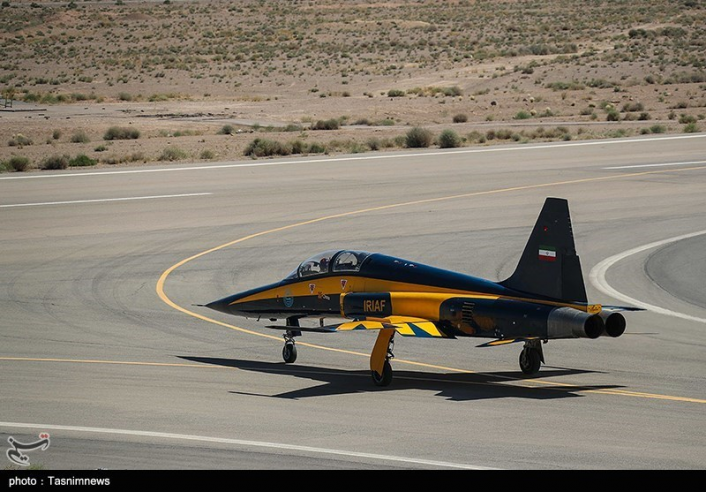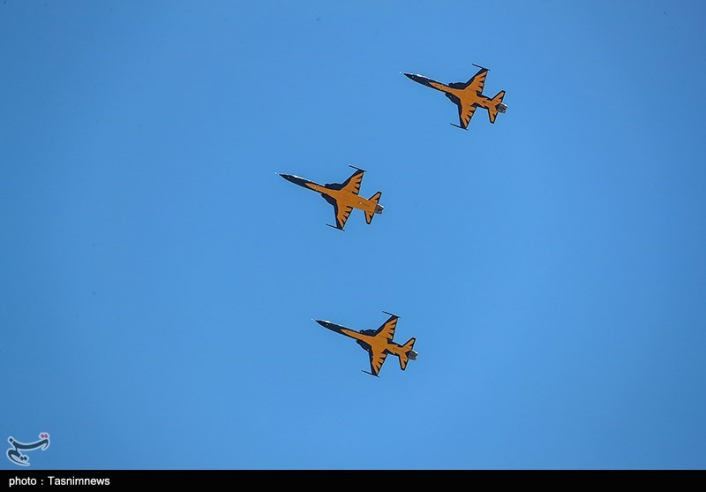The aircraft sport an eye-catching, blue-yellow livery somehow similar to the one used by the U.S. Navy Blue Angels.
On Jun. 25, 2020, the Iranian Air Force was officially delivered three Iranian-made “Kowsar” fighter jets for the Islamic Republic of Iran Air Force (IRIAF) during a ceremony attended by Army Commander Major General Abdolrahim Mousavi and Defense Minister Brigadier General Amir Hatami.
As already explained in detail in this previous article published in 2018, when the “new” aircraft was unveiled, what the Iranian press defines a “fourth-generation all-indigenous interceptor jet” is basically a carbon copy of the American Northrop F-5F Tiger aircraft domestically built and somehow upgraded from the baseline variant manufactured by Northrop Grumman at the end of 1950s and sold to Iran. The Iranian Imperial Air Force operated the F-5s in 1965 and some airframes and parts have survived and been used to develop new jets.
In 2004, another Iranian aircraft based on the old F-5 made the first flight. Named the “Saeqeh”, the aircraft is an F-5E with two vertical tail stabilizers instead of one, additional wing strakes and altered jet intakes. All the rest is exactly identical to the original Northrop Grumman aircraft, so much so, many analysts agree the Saeqeh is not a new jet but a modification of the existing F-5. A two-seater variant of the “Saeqeh” (dubbed “Saeqeh 2”), based on the F-5F was also unveiled in 2015.
The origin of the new “Kowsar” seems to be the same of the “Saeqeh 2” as the “new” aircraft appears to be identical to the F-5F and just obtained modifying the existing two seaters.
According to the Iranian media, “the aircraft enjoys integrated design, an avionic and fire control system linked with digital military data network, a ballistic calculations computer system, head-up display (HUD), which focuses visual data in front of the pilot’s sight, a multi-purpose radar, and an independent radio navigation system.”

To be honest, when it deals with new aircraft, Iranian claims must be taken with grain of salt. You will probably remember the F-313 stealth jet that was unveiled in 2013 and this Author’s epic takedown.
Whatever, the most interesting thing about the presentation on Jun. 25 is the “Kowsar” jets livery: the aircraft sport a blue-yellow paint scheme similar to the one used by the U.S. Navy Blue Angels demonstration team. In fact, these aircraft should be used to form an official aerobatic display team as announced in Commander of the Iranian Air Force Brigadier General Aziz Nasirzadeh in February this year.
“We are planning to stage aerobatic maneuvers with three Kowsar jets during the Army Day parades (on April 17),” he said according to FARS News. “With three jets, we can have an acrojet aerobatic team,” he added.














